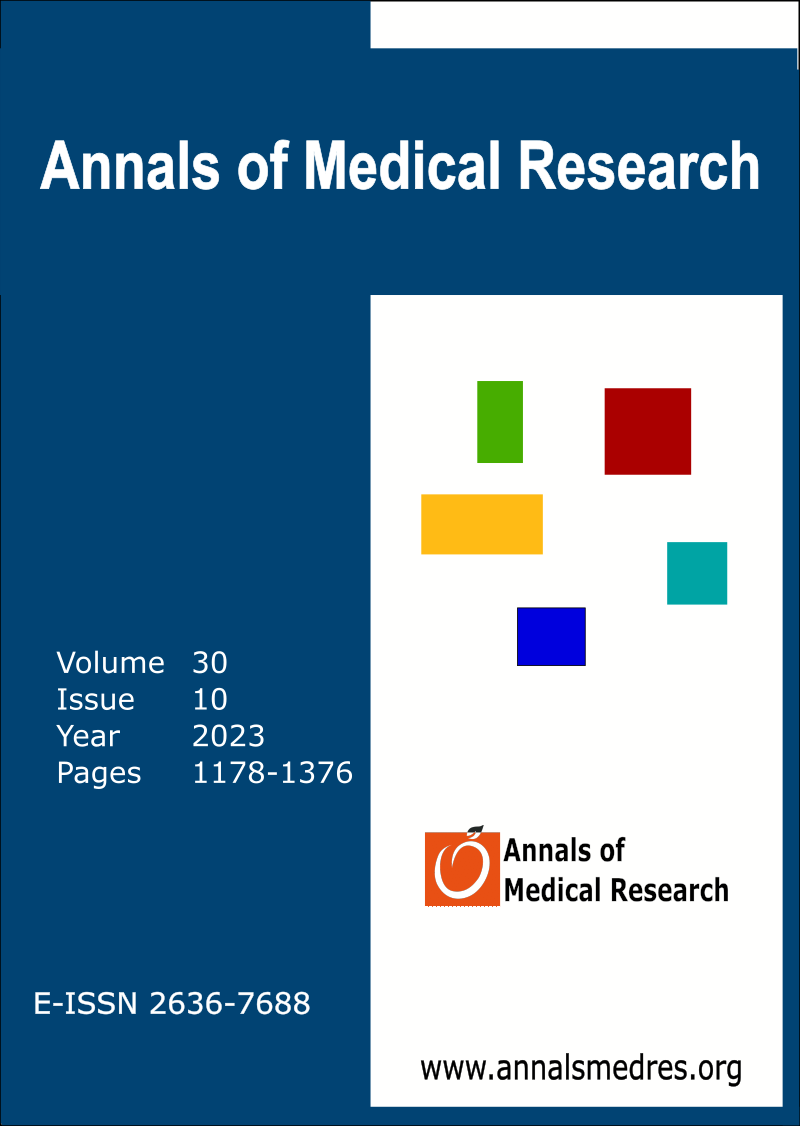The protective effects of glycyrrhizin on doxorubicin-induced cardiotoxicity in rats
Keywords:
Cardiotoxicity, Doxorubicin, Glycyrrhizin, Oxidative stress, RatAbstract
Aim: Doxorubicin (DOX) is a type of chemotherapy drug frequently used to treat different malignancies. However, one of the most serious adverse effects of DOX usage is the potential of cardiotoxicity. Cardioprotective medications may be used to reduce cardiac damage because of DOX therapy. Glycyrrhizin (GL) is found in high amounts in the roots of the ‘Licorice’ plant from the Glycyrrhiza species. Due to its possible effects on blood pressure (BP) and cardiovascular health, GL has attracted attention concerning the heart. Oxidative stress and inflammatory process have been shown to be responsible for DOX-induced cardiotoxicity (DIC). For this reason, in consequence of its possible pharmacological benefits, such as antiinflammatory and antioxidant GL has been researched in this study. Here in, we aimed to investigate the protective effects of GL on DIC.
Materials and Methods: In this study, thirty-two male Wistar albino adult male rats were used. Four groups of rats were assigned at randomly: Control, DOX, GL+DOX, and GL groups. DOX was given 20 mg/kg intraperitoneally (i.p.) and 100 mg/kg GL was administered orally (p.o.) once a day for 14 days. Electrocardiography (ECG) and BP records of the rats were obtained. In addition, malondialdehyde (MDA), superoxide dismutase (SOD), catalase (CAT), and glutathione (GSH) levels in the tissue were measured. Histopathological analyses were performed on the myocardium and descending aorta.
Results: In the DOX group, mean and diastolic BP were higher than in the control group (p<0.05). In the GL+DOX group, diastolic BP was lower than in the DOX group (p<0.05). Pathological ECG changes such as ST segment changes and T negativity were observed in DOX-treated groups. MDA, SOD, CAT, and GSH levels studied in heart tissue were similar in all groups (p>0.05). GSH level in descending aorta was significantly lower in the GL+DOX group compared to the other groups (p<0.05). In the DOX group, degenerated cardiomyocyte density, interstitial edema, and severity of congestion-hemorrhage were statistically significantly increased compared to the control group (p<0.05). On the other hand, degenerated cardiomyocyte density was found to be significantly decreased in the GL+DOX group compared to the DOX group (p<0.05). In the DOX group, thinning of elastic lamellae and loss of myofibrils in muscle cells were observed in the descending aorta. Therefore, the histopathological alterations identified in the DOX group exhibited a significant statistical improvement in the GL+DOX group (p<0.05).
Conclusion: Based on the study's findings, GL can regulate high BP caused by DOX and also alleviate the toxic effects of DOX on both the myocardium and descending aorta.
Downloads
Published
Issue
Section
License
Copyright (c) 2023 The author(s)

This work is licensed under a Creative Commons Attribution-NonCommercial-NoDerivatives 4.0 International License.
CC Attribution-NonCommercial-NoDerivatives 4.0






